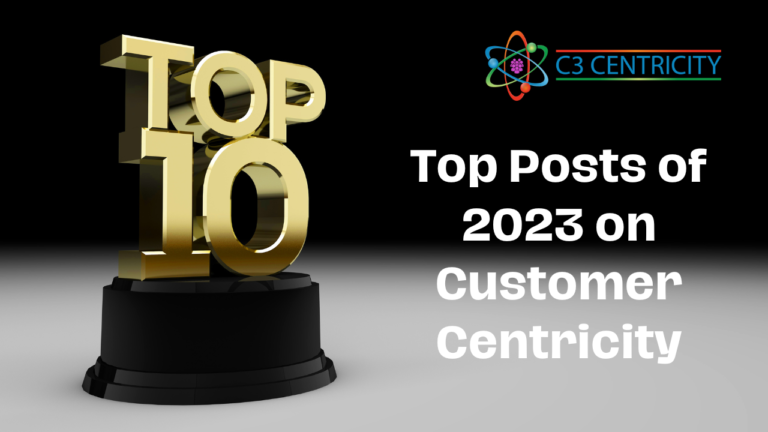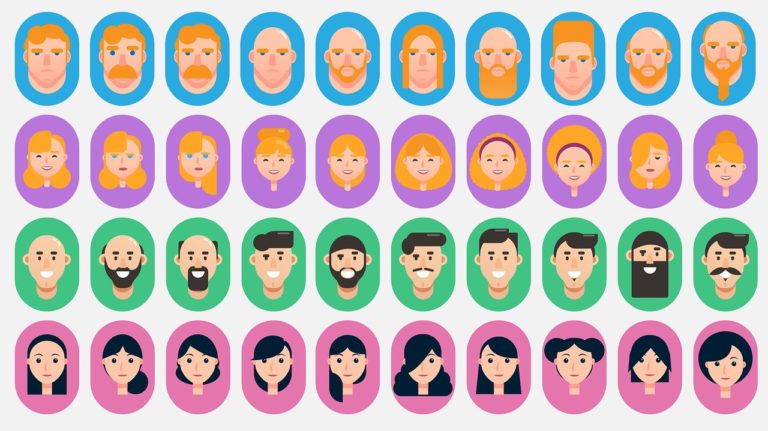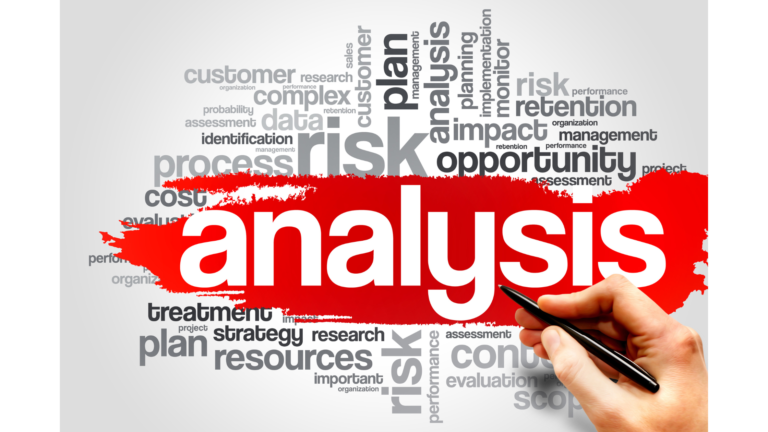Have you noticed how every technology vendor, consultant, and industry publication is telling you that your AI Strategy is the solution to all your business challenges?
The pressure to invest heavily in AI capabilities has never been greater for CPG executives.
Yet many leadership teams ask a fundamental question: How do we separate genuine opportunities from expensive distractions?
This question becomes particularly challenging when it comes to customer understanding.
While an effective AI strategy promises unprecedented insights into consumer behaviour, the path from investment to measurable business impact remains unclear for many leadership teams.
If you would rather listen than read:
The Reality of AI Strategy Investment in CPG Today
Let’s start with some sobering numbers.
According to McKinsey’s recent analysis, while 70% of CPG companies are implementing some form of AI initiative, only 22% report significant business impact from these investments.
The disconnect between implementation and value creation isn’t surprising when you consider that many companies approach AI as a technology solution rather than a business transformation.
The executives I work with often share a common frustration: they’ve invested millions in AI platforms and data lakes, yet still struggle to generate actionable customer insights that drive revenue growth.
One global beverage company CIO recently confided,
”We have more data than ever, but less clarity on what our customers actually want.”
This disconnect exists because technology alone can’t create customer understanding.
The most sophisticated AI systems are only as valuable as the business questions they’re designed to answer and the actions they enable.
Building a Strategic Framework for AI Investment
When working with CPG leadership teams, I’ve found that successful AI strategies share a common foundation: they start with strategic business objectives rather than technological capabilities.
Rather than asking “How can we implement AI?” successful executives ask:
- Which customer-related business challenges, if solved, would create substantial value?
- Where are our current gaps in customer understanding creating barriers to growth?
- How might AI-generated insights enable better strategic decision-making?
This approach shifts the focus from technological implementation to business transformation. This is a subtle but critical distinction that separates high-ROI investments from expensive experiments.
Consider how Miyoko’s Creamery approached this challenge.
As a pioneer in plant-based dairy alternatives, they faced the dual challenge of understanding both their core vegan consumers and the much larger segment of flexitarians they needed to attract for mainstream growth.
Rather than broadly implementing AI across their organization, they identified specific high-value decision points where enhanced customer understanding would drive measurable business outcomes.
They focused initially on product formulation and messaging optimization, using AI to analyze consumer sentiment around taste, texture, and functionality in both their owned channels and broader food conversations.
Their system identified that “performance” messaging (how the product melts, stretches, etc.) resonated more strongly with flexitarians than sustainability or ethical messaging.
According to Miyoko’s Series C funding announcement, this targeted approach helped them reformulate their flagship products and reframe their marketing to emphasize culinary performance. This delivered a 40% increase in repeat purchase rates among non-vegan consumers within 12 months. As you can imagine this was a critical factor in their successful $52 million funding round in 2021 despite a challenging investment environment (Source: Business Wire).
Creating a Balanced AI Investment Portfolio
One of the most challenging aspects of AI investment is balancing short-term wins with long-term capability building. CPG executives face pressure to demonstrate immediate ROI while simultaneously developing the foundations for future competitive advantage.
The solution lies in creating a balanced portfolio of AI initiatives across three horizons:
Horizon 1: Enhanced Decision-Making (0-12 months)
These initiatives focus on applying AI to existing business processes and decision points to drive immediate efficiency and effectiveness gains. They typically leverage existing data sources and require minimal organizational change.
Horizon 2: New Capabilities (12-24 months)
These initiatives develop new ways of understanding and serving customers, often requiring new data sources, skills, and some organizational adaptation. They create capabilities that enable new strategic options.
Horizon 3: Transformative Opportunities (24+ months)
These initiatives fundamentally reimagine how the company creates value for customers, often challenging core business assumptions and requiring significant organizational transformation.
Successful CPG companies typically allocate their AI strategic investment with approximately 50% to Horizon 1, 30% to Horizon 2, and 20% to Horizon 3 initiatives.
Athletic Brewing provides a fascinating example of this balanced approach to AI investment. As the pioneer in the non-alcoholic craft beer category, they had no established playbook to follow, requiring them to be particularly strategic about their technology investments.
Their Horizon 1 initiatives focused on using natural language processing to analyze the millions of consumer reviews and social media comments about their products. This immediate application delivered concrete improvements in product formulations and messaging that helped drive their exponential growth trajectory.
For Horizon 2, they developed capabilities to predict which craft beer styles would translate most effectively to non-alcoholic versions by analyzing consumer sentiment across both alcoholic and non-alcoholic beverage categories. According to Forum3, who partnered with Athletic Brewing on AI initiatives, this allowed them to “prioritize their innovation pipeline based on predicted success rates rather than founder intuition alone” (Forum3, 2023).
Their most ambitious Horizon 3 initiatives involve using AI to personalize the flavor experience itself. By analyzing individual taste preferences and biomarkers, they’re exploring how to create customized brewing processes that could eventually deliver personalized non-alcoholic beers optimized for individual palates.
According to Jamie Lissette, COO of Athletic Brewing, in a Consumer Goods Technology podcast, this balanced approach to technology investment has been critical to both their exponential growth and their ability to attract over $173 million in funding from investors like Keurig Dr Pepper.
From Insights to Action: The Critical Gap
The value of AI-generated customer insights isn’t in the insights themselves but in the actions they enable. Yet many CPG companies struggle to bridge the gap between insight generation and operational execution.
A recent Deloitte study found that while 67% of CPG executives rate their companies as effective at generating customer insights, only 24% believe they’re effective at translating those insights into operational improvements or strategic initiatives.
This gap exists because many companies invest heavily in AI technology but underinvest in the organizational capabilities needed to act on the resulting insights.
If you too struggle to turn insights into actions, then you are certainly missing an important step in your insight development process. We have the answer! Check out our insight training offers.
For CPG executives facing this challenge, I recommend focusing on three critical capabilities:
1. Decision Architecture
Clearly define how customer insights will flow into specific decision processes. Which executives and teams will receive which insights? How will those insights be formatted to enable clear decision-making? What authority do teams have to act on insights without additional approvals?
2. Cross-Functional Activation
Create mechanisms that allow insights to flow across functional boundaries. These might include cross-functional teams with dedicated time allocations, innovation processes that formally incorporate customer insights, or executive forums that review insights and direct action. (This is step step 4 of C3Centricity’s 8-step CATSIGHT™ Process)
3. Impact Measurement
Develop clear metrics that link customer insight initiatives to business outcomes. These should include both leading indicators (changes in customer behaviour) and lagging indicators (financial results).
Youth To The People, a skincare brand that has experienced meteoric growth since their launch, offers a compelling example of these capabilities in action. They’ve built what they call “The Feedback Loop,” an integrated insight system that connects consumer data from their DTC channel, retail partners, social listening, and customer service into a unified decision framework.
Unlike traditional insights departments that produce periodic reports, their system feeds directly into weekly cross-functional “activation sessions” where teams evaluate signals and determine actions. Each identified opportunity or challenge is assigned to a specific team with clear decision rights and reporting requirements.
For example, when their system detected emerging consumer questions about ingredient sourcing that weren’t being adequately addressed by existing content, their product development and marketing teams were automatically tasked with creating new educational materials. The system then tracked engagement with these materials and their impact on conversion rates.
According to reporting in Beauty Independent, this tightly integrated approach has reduced their insight-to-action cycle from months to days, contributing to their impressive growth trajectory prior to their acquisition by L’Oréal for an undisclosed amount in December 2021 (Beauty Independent).
Do you know C3Centricity has both in-person and offline courses on Actionable Insight Development?
Executive-Level Metrics for Customer Insight ROI
For CPG executives sponsoring significant AI investments in customer understanding, robust ROI measurement is essential. Yet traditional financial metrics often fail to capture the full value of these initiatives, particularly those that build long-term capabilities.
The executives I advise typically develop a balanced scorecard approach that includes:
Financial Metrics
- Incremental revenue from insight-driven initiatives
- Margin improvements from optimized decision-making
- Reduced costs from eliminated low-value activities
- Improved working capital efficiency
Capability Metrics
- Speed of insight generation and activation
- Breadth of customer understanding (segments, needs, occasions)
- Accuracy of customer behavior predictions
- Organizational engagement with insights
Strategic Metrics
- Market share in targeted segments
- Brand perception improvements
- New revenue streams enabled
- Competitive differentiation achieved
Olipop, the functional soda company that’s disrupting the carbonated soft drink category, provides an illuminating example of this measurement approach. They’ve developed what they call their “Consumer Value Framework” that explicitly connects their customer understanding investments to concrete business outcomes.
This framework tracks both the traditional metrics (revenue growth, customer acquisition costs, lifetime value) and more nuanced measures of how effectively they’re building category understanding in an emerging space. For example, they measure how quickly they can identify and respond to taste preference shifts among former conventional soda drinkers versus existing health-conscious consumers.
According to Ben Goodwin, Olipop’s Co-Founder/CEO/Formulator in an interview with Entrepreneur (2025), this comprehensive measurement system has allowed them to attribute specific business outcomes to their AI-powered consumer understanding initiatives, helping them secure over $55 million in funding despite the challenging investment environment. Perhaps more impressively, it has guided their rapid retail expansion to over 20,000 stores nationwide while maintaining strong velocity metrics that continue to attract retail partners.
Building the Organization to Capitalize on Strategic AI-Generated Insights
Technology and measurement systems alone aren’t sufficient to create value from an AI strategy and investments in customer understanding. The organizational structure and culture must also evolve to capitalize on these new capabilities.
For many CPG companies, this represents the most challenging aspect of realizing ROI from AI costs. Traditional hierarchical structures and functional silos can severely limit the flow and impact of customer insights.
Based on my work with leading CPG organizations, three organizational models have proven particularly effective:
1. Insight Pods
Small, cross-functional teams organized around specific customer segments or business challenges. These pods typically include data scientists, consumer insights professionals, marketers, and product developers with dedicated time allocations.
2. Network Organisations
Maintaining functional structures but creating formal networks that connect insight generators with decision-makers across the organization, often facilitated by digital collaboration platforms.
3. Capability Centers
Centralised teams that develop advanced customer understanding capabilities and then deploy them throughout the organization, along with the training and tools needed for effective utilization.
Oatly has implemented a particularly innovative organizational approach that they call their “Insight Ecosystem.” Rather than creating a traditional centralized insights function or completely distributed capabilities, they’ve developed a hub-and-spoke model that evolves based on business needs.
Their central “Insight Hub” maintains core capabilities and technologies, but they deploy specialized “pods” around specific business challenges like new market entry, product reformulation, or sustainability messaging. These pods incorporate cross-functional expertise including R&D, marketing, and supply chain.
Most distinctively, they’ve implemented what they call “insight champions.” These are individuals embedded within functional teams who have received specialized training in data interpretation and insight application. These champions serve as translators between the technical insights team and the operational functions.
According to research on their consumer-driven strategies from RightMetric (2023), this flexible approach has been instrumental in their successful expansion across diverse global markets, allowing them to quickly identify and respond to the significant cultural differences in plant-based dairy adoption and messaging effectiveness. The model has been particularly valuable in managing the tension between global brand consistency and local market adaptation.
Looking Forward: The Evolving Value Equation
As AI technologies continue to mature, the value equation for customer understanding will evolve significantly. CPG executives need to anticipate these changes to ensure their investments remain aligned with emerging opportunities.
Three developments are particularly worth watching:
1. The Value of Proprietary Data
As AI algorithms become more widely available, proprietary customer data will become an increasingly valuable competitive advantage. CPG companies with direct consumer relationships will have significant advantages over those that rely primarily on third-party data.
2. The Rise of Ecosystem Strategies
Individual companies will increasingly struggle to develop comprehensive customer understanding alone. Ecosystem strategies that combine data and capabilities across complementary companies will become more common and more valuable.
3. The Convergence of Physical and Digital
The distinction between physical products and digital services will continue to blur. CPG companies that effectively integrate digital services with physical products will gain unprecedented insight into consumer behavior and new opportunities to create value.
Conclusion: The Path Forward for CPG Executives
For CPG executives navigating AI investments in customer understanding, the path to positive ROI involves much more than selecting the right technology vendors.
It requires a strategic approach that:
- Starts with clear business objectives rather than technological capabilities
- Creates a balanced portfolio of initiatives across multiple time horizons
- Develops the organizational capabilities to act on AI-generated insights
- Implements comprehensive measurement systems that capture both financial and strategic value
- Evolves organizational structures to capitalize on new capabilities
Those who successfully navigate this complex landscape will create sustainable competitive advantages that extend far beyond the efficiency gains that typically drive AI investments. They’ll develop the ability to anticipate and shape consumer behavior, creating opportunities for category leadership and disruptive innovation.
The CPG executives who thrive in this environment won’t be those who simply invest in AI technology. They’ll be the ones who recognize that AI is simply an enabler for deeper customer understanding, and who build the strategic, organizational, and measurement systems needed to translate that understanding into decisive action and business growth.
What steps are you taking to ensure your AI strategy delivers genuine business impact? I’d love to hear your experiences and challenges.
Denyse Drummond-Dunn is the founder and CEO of C3Centricity, a consultancy specialized in helping executives reignite momentum in their career and companies. With more than 25 years of experience working with global CPG companies, she enables leadership teams to transform their consumer understanding into sustainable competitive advantage.







